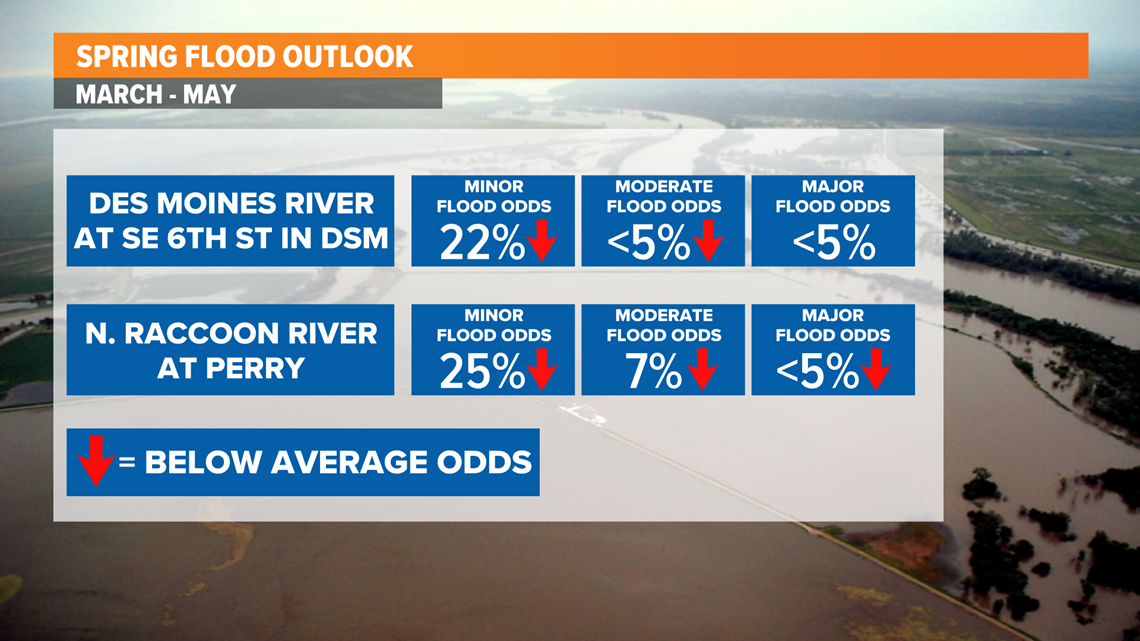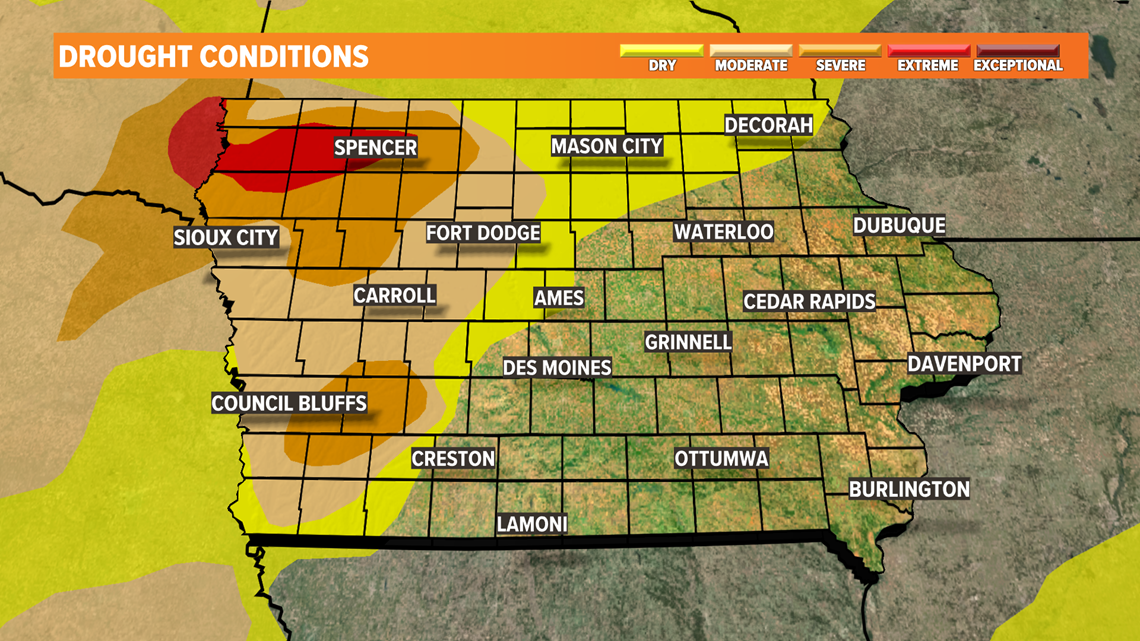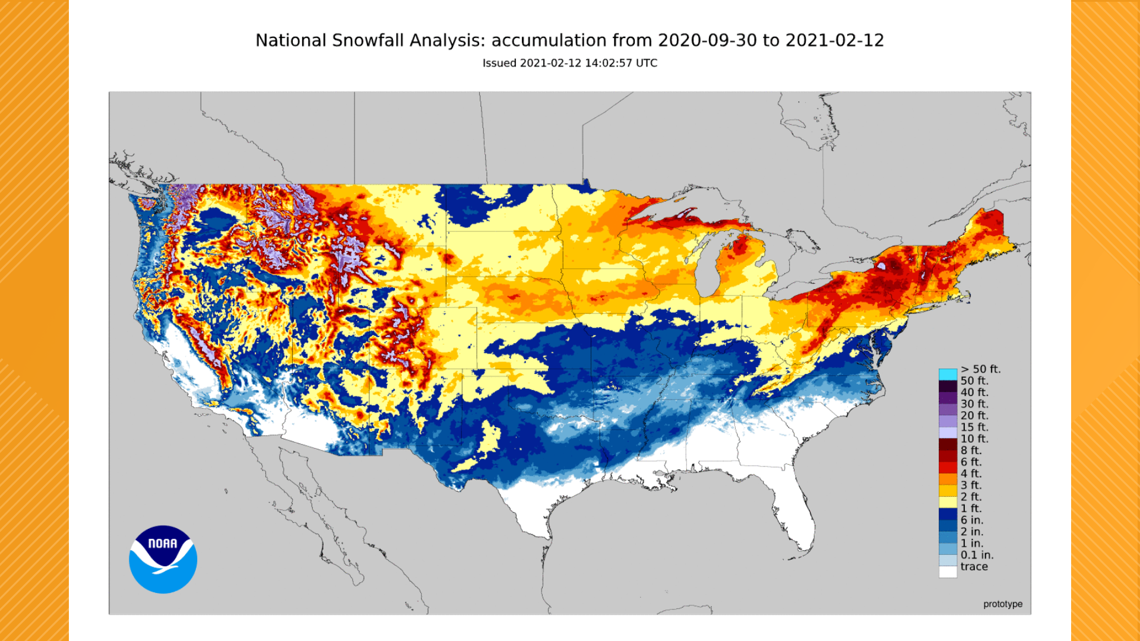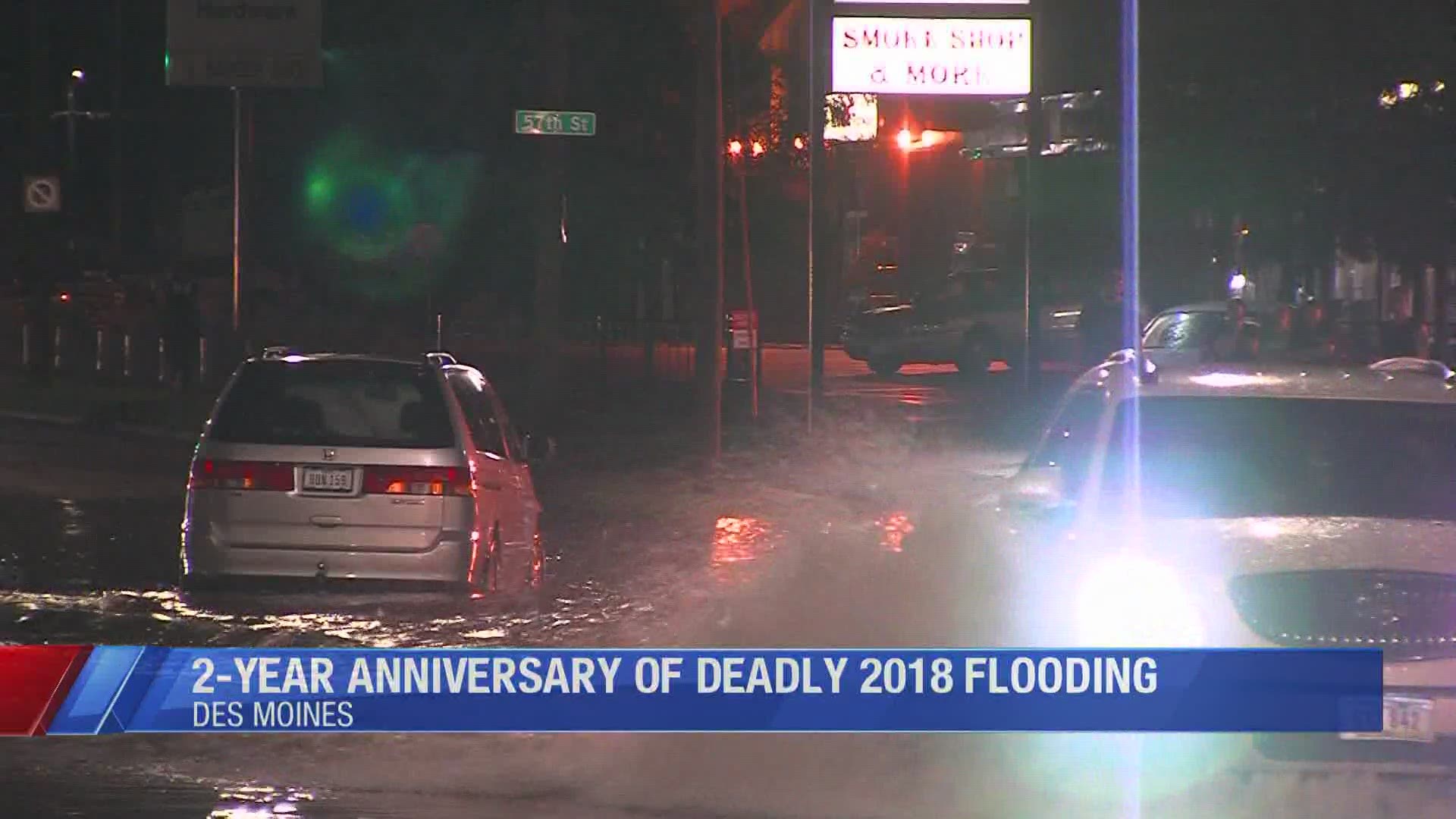DES MOINES, Iowa — EDITOR'S NOTE: The above video is from June 30, 2020
The National Weather Service in Des Moines released their first spring flood outlook on Thursday, and the news is positive for central Iowans.
The forecast calls for near or below-average probabilities of river flooding in most central Iowa rivers.
For example: the average probability of minor flooding on the Des Moines River at SE 6th Street in Des Moines is 42%. This year's chance of minor flooding is only 22%.


Numerous factors—such as drought, snow pack, soil moisture, frost depth and current stream flows—all play in role in spring river flooding.
The drought that developed across much of Iowa in 2020 is still in place in western Iowa. Drought conditions have improved noticeably in central Iowa since this summer.


Iowa's current soil moisture largely coincides with the drought conditions.
Levels are below normal in western Iowa and near normal in central Iowa. Surprisingly, soil moisture is slightly below normal in eastern Iowa.
The current snow pack is quite high across central Iowa. The water equivalent of that snow pack is about 1" in most spots and 2" or more in isolated locations.
The good news? Areas upstream in Minnesota, South Dakota, North Dakota and even far northern Iowa have received much less snow than central Iowa this winter.


Stream flows are near normal on most central Iowa rivers. Frost depth currently ranges from 7-10", and may increase with below average temperatures in the forecast over the next week to 10 days.
Frost depth is important because a frozen ground is unable to absorb moisture.
The longer the ground is frozen, the better than chances for spring flooding.

